
Musician Norm Nakamura’s movie-like story is a real-life example of how far you can go if you really chase your dreams.
The shamisen is an instrument unique to Japan. Played with a bachi, or plectrum, this three-stringed instrument has a very unique twang that often has a place in Japanese traditional arts like kabuki and puppet shows. Yet, just like for western-style stringed instruments, there is also a market for classical, modern, and even fusion shamisen music, and perhaps most famous for dabbling in all three are the award-winning Yoshida Brothers.
▼ The Yoshida Brothers playing their rendition of the traditional tsugaru shamisen song “Tsugaru Jongara Bushi”
The Yoshida Brothers are world-renowned for their mastery of the shamisen, and for the expressive way in which they play. Their ability to produce the above kind of classical music, as well as to incorporate the traditional styles of the instrument into modern music, like in the song below, make them a popular musical duo who have performed all over the world, even being featured in an ad for the energy drink, Red Bull.
Yet still, shamisen music, even that of the Yoshida Brothers, is a niche genre, and for many the word “shamisen” is an unfamiliar term. For Norm Nakamura, content creator and photographer for YouTube channels Tokyo Lens and Shamisen in Tokyo, and current apprentice to the Yoshida Brothers, that was most definitely the case. In fact, it wasn’t until he’d been to and left Japan twice that he’d even heard the word “shamisen.”
Norm was born and raised in Canada, and though he experimented with various string instruments during his school-age years, the shamisen certainly wasn’t one of them, and he didn’t grow up with any significant exposure to Japanese traditional culture at all. His first brush with Japan was in his university days, when he supported international students at his school. After that he was inspired to take a trip to Japan, where he traveled all across the country, and then, after graduating, he even returned to do a year working there as part of the working holiday program.
▼ Norm and the Yoshida Brothers
In Dec of 2011, I achieved the unbelievable goal of becoming the apprentice of the Yoshida Brothers
— Tokyo Lens (@Tokyo_Lens) December 30, 2018
Now, almost exactly 7 years later I announce our first collaborative performance to be aired on TV Tokyo at 17:55 on Jan 1st
Never let anyone tell you your dreams are impossible pic.twitter.com/TWRi7jfVlf
Still, after all that time and travel in Japan, he had never once heard of the shamisen. It was only after he came back that a friend, who had heard that he’d been to Japan, asked him if he’d heard of the Yoshida Brothers. “The who?” was his reply, and his friend eagerly gave him a CD that, unbeknownst to him, would change his life.
That CD was Yoshida Brothers 2, their third international album, released in 2004. Norm listened to that CD, and what he heard made him instantly regret leaving Japan. What was it about their music that had struck him so strongly? Norm said he’s often been asked that question, but has never been able to give a good answer to describe how he truly felt on that first listen.
▼ One track in particular caught his attention: “Kodo”.
“It was like hearing music for the first time. It was instantly appealing as much as it was puzzling. It was instantly relatable, however new. It was like I had stumbled into this world that was so much bigger than myself, and I had the option to explore it by simply putting on a pair of headphones.”
Needless to say, Yoshida Brothers 2 was like nothing Norm had ever heard before, and it drew him to the shamisen. At first, he wasn’t really interested in learning to play it, but he became an instant fan of the instrument’s sound, and also of the Yoshida Brothers. At a convention in Washington later that year, the Yoshida Brothers happened to make an appearance, so he went to get their autograph, thanked them for their time, and then for some reason over-excitedly told them that he would see them in Japan next time. Little did he know, he was actually predicting the future.
▼ Norm with the shamisen produced in collaboration with Final Fantasy designer Yoshitaka Amano, Shaula
Though at that time Norm still wasn’t that interested in playing the shamisen, his newfound appreciation for the instrument encouraged him to return to Japan. He moved to Tokyo and began to work in an English conversation school, but while he still enjoyed shamisen music, his interests turned instead to racing cars, and he fell in with a crowd of drift racers.
Unfortunately it was a near-death experience that caused Norm to finally pursue his as-yet undiscovered dream of playing the shamisen. Anyone who’s seen Fast and Furious: Tokyo Drift knows that racing cars is a fairly dangerous past-time, and Norm wasn’t immune to that danger. He crashed his car in a heavy accident, and he was lucky to walk away from it with his life.
Back in 2010 I owned a race car
— Tokyo Lens (@Tokyo_Lens) July 24, 2018
That story ended almost tragically
I haven’t been back here since then...https://t.co/lRdlm26RPq pic.twitter.com/cECRN8YRK1
As often happens when one brushes close to death, Norm started to rethink his life. In a discussion with a friend who was chasing his own dreams, he was asked, “If you could do anything in the world, no matter how crazy, what would you do?”
And Norm didn’t have to think about it long before he answered, “I would learn shamisen from the Yoshida Brothers.” And that’s when his journey to become their apprentice truly began.
But it wasn’t going to be easy. He learned that from the very beginning, when getting in contact with the Yoshida Brothers proved to be a challenge in itself. He had had some experience doing TV work in Japan, so he began to call producers, agents, anyone who could put him in contact with the Yoshida Brothers, but nobody seemed to be able to help him. He did hours of research and sent what felt like hundreds of e-mails, to no avail. In almost a whole year, he could not find anyone who could connect him to the famous musicians, until one day he came across a shamisen shop in Tokyo that had sold some goods to the Yoshida Brothers.
So Norm became a regular visitor to the shop, learning about the shamisen, what the different kinds are, and how it’s played, all the while building a rapport with the owners, who could potentially contact the Brothers on his behalf. Finally, after several months, he approached the shop owners and said, “Look, I’m pretty serious and I really want to learn the shamisen. But the problem is, if I don’t learn from the Yoshida Brothers, I’m never going to learn.”
The owners of the shamisen shop offered to put Norm in contact with the Yoshida Brothers, “But,” they said, “You’re going to need a good shamisen.” So Norm, good friend that he was, dropped a few thousand U.S. dollars on a high-quality shamisen from the shop, and they contacted the Yoshida Brothers for him.
▼ Picking up his new shamisen for the first time
Unfortunately, the response was a resounding “No.” Apparently, the Yoshida Brothers had never taught a complete beginner before, and their status as world-famous musicians comes with a busy schedule which would make it hard for them to commit. But Norm was determined to be trained by the Yoshida Brothers or by no one at all, so he waited a few months, then asked the owners of the shop to try again. But the answer once again came pretty quickly, and it was still “No.”
Norm had a tenacious grip on to his dreams, however, and he decided he would give it one more push before the end of the year. He waited two months, then said to his shamisen shop friends, “Tell them I’m serious, that I’m gonna be the best apprentice they’ve ever had, that I’m not going to give up…I’m going to take it really seriously.” Then he topped it off with, “If they say no now, they’ll just hear from me again next year.”
https://twitter.com/ochi_aka_yoshi/status/1018023123499737089Strangely, this time it was a couple of months before Norm heard anything back about his last push. The long wait began to make him jittery; since the last responses had both been an immediate “No”, perhaps this time the answer would be different? He didn’t dare to hope, until one day in December he got a call from an unknown number.
It turned out to be the older of the Yoshida Brothers, Ryoichiro Yoshida.
Perhaps it was the new way in which Norm framed his appeal to reflect his seriousness about learning the shamisen that finally drew the Brothers’ attention. Or perhaps they were just tired of being asked, and wanted to give a final, in-person “No”. Whatever it was, the elder Yoshida Brother invited him to a no-strings-attached coffee. “And bring your shamisen,” he added.
▼ The text in the image says “Finally”
So Norm carried his shamisen to a cafe in Tokyo to meet with a Japanese celebrity shamisen player who could change his life forever. No pressure, right? They talked for a bit, and then Ryoichiro asked to examine Norm’s shamisen. “This doesn’t look like a cheap shamisen,” he mused. “Have you played it?” Norm admitted that he hadn’t dared to touch it; he was too afraid of picking up bad habits and getting off on the wrong foot.
That, and the high quality of the shamisen–in which Norm had obviously invested quite a bit of money–seemed to impress Mr. Yoshida, and he said, “Okay, I’ll send you a schedule. You pick a date, and we’ll start next month.”
And so, after months of diligence, patience, and persistence, a simple coffee date launched an amazing new journey in Norm’s life. Now, in 2019, Norm has trained with the Yoshida Brothers in one-on-one (or two-on-one) lessons about once per month for the last seven years. They have been kind, patient, and all-around excellent teachers, but he’s had to put in a lot of work to keep up, including three to seven hours per day of practice, while listening only to shamisen music day in and day out.
But he’s loved it every step of the way, and his dedication has been rewarded. At his first competition two and a half years ago, he won the Judge’s Special Prize for his unique rendition of the classic “Tusgaru Jongara Bushi.” It was a major achievement, especially for a first-time competitor, and that success has pushed him to continue to strive for excellence in his practice ever since.
▼ Earning the Judge’s Special Prize at his first competition
His career reached a high at the end of 2018, when he played side-by-side with the Yoshida Brothers on live television on New Year’s Eve, the day with the highest viewer ratings in Japan. He never would have dreamed that he would be collaborating with such talented musicians in a live performance; he feels proud, but also slightly embarrassed, because he feels that he is not nearly good enough to share the stage with them.
▼ “They play in such perfect unison,” he said. “I was worried I would ruin it.”
今日夕方5時55分の「#YOUは何しに日本へ」は新年あけおめ“怒涛のコラボ祭り”
— YOUは何しに日本へ? (@you_nanishini) January 1, 2019
お正月だよ!YOUたち全員集合!
全国空港コラボに!テレ東系列コラボ!
あのハンコ王子ロマと、日本語自転車旅のマルコ、二人が「指さし旅」に挑戦!#バナナマン #設楽統 #日村勇紀#テレビ東京 pic.twitter.com/kyUdRtf1rY
He’s also gained a lot by being a part of the shamisen community. Not too long ago, he became a manager to several shamisen players in Japan, and now helps them book gigs in Japan and overseas. He is also the creator of the “Shamisen in Tokyo” YouTube channel, which regularly features Japanese shamisen players. Through that, he has made invaluable personal connections and built a solid network of comrades.
For 4 years @Kiki_Tsugaru and I have made Under the Cherry Blossoms videos.
— Tokyo Lens (@Tokyo_Lens) June 9, 2018
Last year we got 3.9 MILLION views on InTheNow
Long overdue, this years Video is finally up: https://t.co/LE8ttoPXxy pic.twitter.com/oyIfPw9I4Y
Through playing the shamisen, he has also learned tons about Japan, its culture, and its people, and the experience has taught him about life, and how to get past the hard parts of life. The shamisen has become everything for him, and he even plays when he’s feeling stressed.
It’s been a long journey, and one not completely smooth; Norm does say he struggles with the shamisen at times because he didn’t grow up knowing the nuances of the instrument. It’s an instrument of feeling, he says. There is no sheet music, and there is nothing like the frets on a guitar, that indicate where you should put your fingers to find the right notes. The only way to learn the shamisen is play it, and to listen, and to feel if the notes are correct. Not having grown up in Japan, and not having any exposure to the instrument over his lifetime, has left Norm at a bit of a disadvantage, compared to Japanese players. Even after seven years of studying the shamisen, Norm still feels like he only has a basic grasp of the instrument’s sound.
Yet, at the same, the amount of additional effort, time, and hard work that Norm has had to put in to catch up to his Japanese counterparts has afforded him opportunities that he had never thought possible, such as his work in the overseas promotion of shamisen music. He’s grateful for all of the hard work the shamisen has pushed him to endure, as well as all of the wonderful things it has given him in return.
▼ A sample of Norm playing the shamisen
So what’s next for Norm? For now, he’s committed to continuing his apprenticeship with the Yoshida Brothers. Last year, he asked Ryoichiro if he was ready to buy a new shamisen, and the answer, as you’ll see in one of Norm’s videos on Tokyo Lens, was an unequivocal “Yes!” Now Norm has invested an even larger amount of money in a professional-level, custom-designed shamisen, and is ready to take his shamisen training to the next level.
A new life, a new career, and a new mission in a different country all came from listening to a single CD, followed by the guidance of the Yoshida Brothers, whose masterful skill in this traditional Japanese instrument pulled Norm away from Canada and back to Japan, where he ultimately became their apprentice. It’s a story much like an anime or a movie, but it’s real life evidence that hard work and determination can take you anywhere if you want it badly enough.
Images: Norm Nakamura

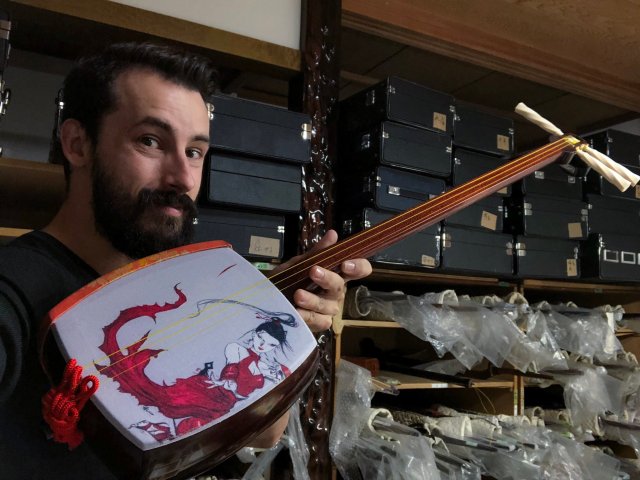
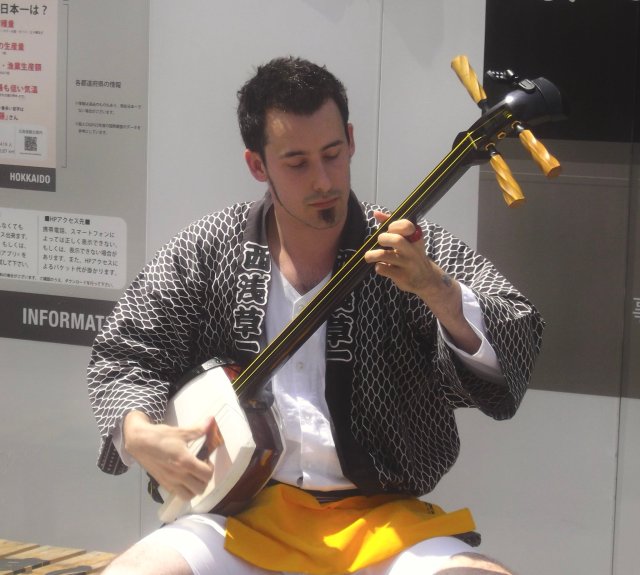
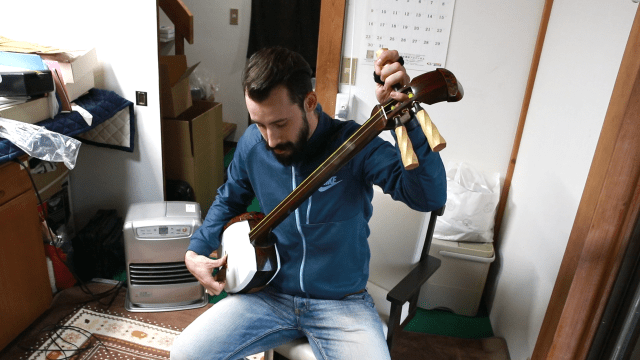

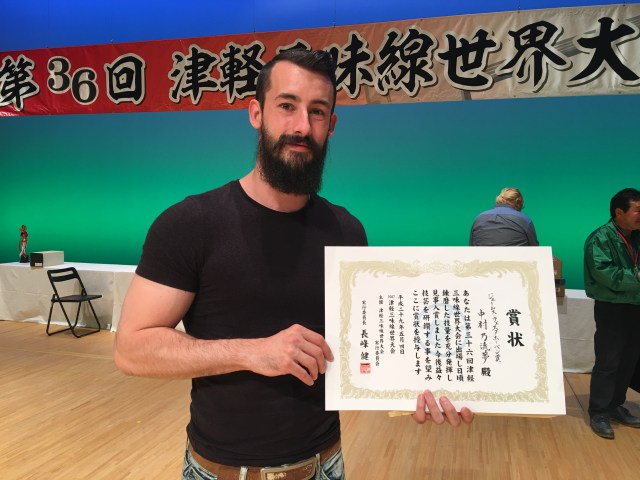
 Japanese new recruit fired after one month for being partially out of frame during video meetings
Japanese new recruit fired after one month for being partially out of frame during video meetings Studio Ghibli’s No-Face appears again on the streets of Japan to rock out on his shamisen 【Video】
Studio Ghibli’s No-Face appears again on the streets of Japan to rock out on his shamisen 【Video】 Final Fantasy XVI will draw on “anguish you can only understand once you become an adult”
Final Fantasy XVI will draw on “anguish you can only understand once you become an adult” Japanese comedian uses traditional Japanese court instrument to play…the McDonald’s fryer alarm?
Japanese comedian uses traditional Japanese court instrument to play…the McDonald’s fryer alarm? Foreigner in Japan randomly walks by street musicians, joins in with epic improvised singing
Foreigner in Japan randomly walks by street musicians, joins in with epic improvised singing Starbucks at Shibuya Scramble Crossing reopens, but is it really bigger and better than before?
Starbucks at Shibuya Scramble Crossing reopens, but is it really bigger and better than before? Studio Ghibli unveils new goods that tip the hat to The Cat Returns
Studio Ghibli unveils new goods that tip the hat to The Cat Returns Orange Juice Crisis ’24 – Japan’s OJ supplies drying up
Orange Juice Crisis ’24 – Japan’s OJ supplies drying up McDonald’s Japan’s new pancake pie is a taste sensation
McDonald’s Japan’s new pancake pie is a taste sensation Foreigner’s request for help in Tokyo makes us sad for the state of society
Foreigner’s request for help in Tokyo makes us sad for the state of society Bad tourist manners at Mt Fuji Lawson photo spot prompts Japanese town to block view with screens
Bad tourist manners at Mt Fuji Lawson photo spot prompts Japanese town to block view with screens Spring Mos Burger x SpongeBob lucky bags bring us fun under the sun【Photos】
Spring Mos Burger x SpongeBob lucky bags bring us fun under the sun【Photos】 All-you-can-drink deal for US$4 in Shinjuku is one of the best finds in Tokyo
All-you-can-drink deal for US$4 in Shinjuku is one of the best finds in Tokyo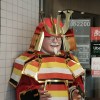 History’s largest force of Samurai Colonel Sanders deploying to KFC Japan branches
History’s largest force of Samurai Colonel Sanders deploying to KFC Japan branches One of Japan’s oldest castles now lets travelers spend night on the grounds, drink in its keep
One of Japan’s oldest castles now lets travelers spend night on the grounds, drink in its keep Red light district sushi restaurant in Tokyo shows us just how wrong we were about it
Red light district sushi restaurant in Tokyo shows us just how wrong we were about it Japanese city loses residents’ personal data, which was on paper being transported on a windy day
Japanese city loses residents’ personal data, which was on paper being transported on a windy day McDonald’s new Happy Meals offer up cute and practical Sanrio lifestyle goods
McDonald’s new Happy Meals offer up cute and practical Sanrio lifestyle goods Japanese ramen restaurants under pressure from new yen banknotes
Japanese ramen restaurants under pressure from new yen banknotes Ghibli Park now selling “Grilled Frogs” from food cart in Valley of Witches
Ghibli Park now selling “Grilled Frogs” from food cart in Valley of Witches Two things to do, and two things not to do, when leaving a traditional Japanese inn
Two things to do, and two things not to do, when leaving a traditional Japanese inn New definition of “Japanese whiskey” goes into effect to prevent fakes from fooling overseas buyers
New definition of “Japanese whiskey” goes into effect to prevent fakes from fooling overseas buyers Our Japanese reporter visits Costco in the U.S., finds super American and very Japanese things
Our Japanese reporter visits Costco in the U.S., finds super American and very Japanese things All-you-can-drink Starbucks and amazing views part of Tokyo’s new 170 meter-high sky lounge
All-you-can-drink Starbucks and amazing views part of Tokyo’s new 170 meter-high sky lounge More foreign tourists than ever before in history visited Japan last month
More foreign tourists than ever before in history visited Japan last month New Pokémon cakes let you eat your way through Pikachu and all the Eevee evolutions
New Pokémon cakes let you eat your way through Pikachu and all the Eevee evolutions Disney princesses get official manga makeovers for Manga Princess Cafe opening in Tokyo
Disney princesses get official manga makeovers for Manga Princess Cafe opening in Tokyo French Fries Bread in Tokyo’s Shibuya becomes a hit on social media
French Fries Bread in Tokyo’s Shibuya becomes a hit on social media Sales of Japan’s most convenient train ticket/shopping payment cards suspended indefinitely
Sales of Japan’s most convenient train ticket/shopping payment cards suspended indefinitely Sold-out Studio Ghibli desktop humidifiers are back so Totoro can help you through the dry season
Sold-out Studio Ghibli desktop humidifiers are back so Totoro can help you through the dry season Japanese government to make first change to romanization spelling rules since the 1950s
Japanese government to make first change to romanization spelling rules since the 1950s Ghibli founders Toshio Suzuki and Hayao Miyazaki contribute to Japanese whisky Totoro label design
Ghibli founders Toshio Suzuki and Hayao Miyazaki contribute to Japanese whisky Totoro label design Doraemon found buried at sea as scene from 1993 anime becomes real life【Photos】
Doraemon found buried at sea as scene from 1993 anime becomes real life【Photos】 Tokyo’s most famous Starbucks is closed
Tokyo’s most famous Starbucks is closed One Piece characters’ nationalities revealed, but fans have mixed opinions
One Piece characters’ nationalities revealed, but fans have mixed opinions We asked a Uniqlo employee what four things we should buy and their suggestions didn’t disappoint
We asked a Uniqlo employee what four things we should buy and their suggestions didn’t disappoint Final Fantasy fans around the world share musical creations with Home de Chocobo challenge【Video】
Final Fantasy fans around the world share musical creations with Home de Chocobo challenge【Video】 Wagakki Band’s newest video “Strong Fate” might just be the most epic one yet!
Wagakki Band’s newest video “Strong Fate” might just be the most epic one yet! New My Neighbor Totoro fashion bags and wallets save best surprise for what’s on the inside【Pics】
New My Neighbor Totoro fashion bags and wallets save best surprise for what’s on the inside【Pics】 Famikoto celebrates Nintendo with medley of game music played on traditional instruments【J-Tunes】
Famikoto celebrates Nintendo with medley of game music played on traditional instruments【J-Tunes】 “Hey, how’d you get our personal information?” we ask a Japanese telemarketer
“Hey, how’d you get our personal information?” we ask a Japanese telemarketer Japan’s 10 best singing voices as chosen by people in the industry
Japan’s 10 best singing voices as chosen by people in the industry We try to get the first PS4 sold in Japan, and so does this guy dressed like a Move controller
We try to get the first PS4 sold in Japan, and so does this guy dressed like a Move controller Newsflash: Sony unveils “Project Morpheus”, new virtual reality headset for PlayStation 4
Newsflash: Sony unveils “Project Morpheus”, new virtual reality headset for PlayStation 4 Using real-world violence to defeat the Street Fighter 6 cast, starring Saori Yoshida【Videos】
Using real-world violence to defeat the Street Fighter 6 cast, starring Saori Yoshida【Videos】 Digimon staff give skating champion Yuzuru Hanyu a present he would not likely soon forget
Digimon staff give skating champion Yuzuru Hanyu a present he would not likely soon forget Japanese first grader wins math contest by quantifying “which hiragana are the hardest to write”
Japanese first grader wins math contest by quantifying “which hiragana are the hardest to write” Watch over 20 drones dance in unison with a trio of shamisen players in front of Fuji【Video】
Watch over 20 drones dance in unison with a trio of shamisen players in front of Fuji【Video】 Japanese wrestler Saori Yoshida smashes Guinness World Record by bursting balloons with her butt
Japanese wrestler Saori Yoshida smashes Guinness World Record by bursting balloons with her butt It’s a hard rock life: NINGEN ISU’s Shinji Wajima talks about songwriting, working with friends
It’s a hard rock life: NINGEN ISU’s Shinji Wajima talks about songwriting, working with friends Sword of one of Japan’s last samurai discovered in house in America
Sword of one of Japan’s last samurai discovered in house in America Steam Garden: Tokyo’s steampunk festival might be better than a Victorian time machine
Steam Garden: Tokyo’s steampunk festival might be better than a Victorian time machine
Leave a Reply